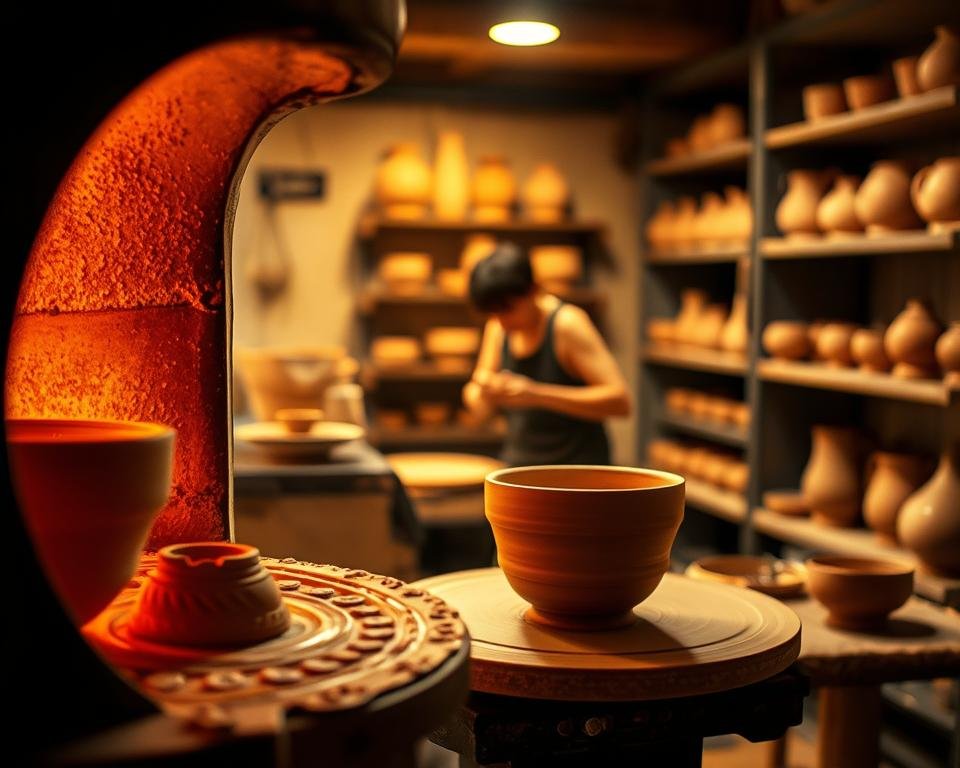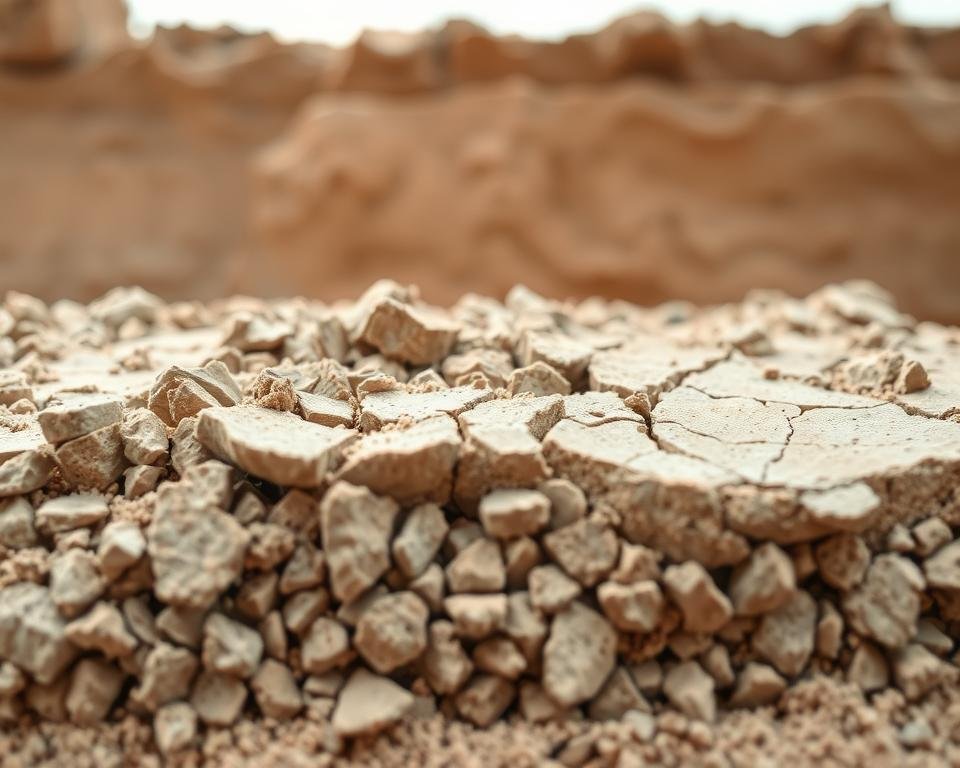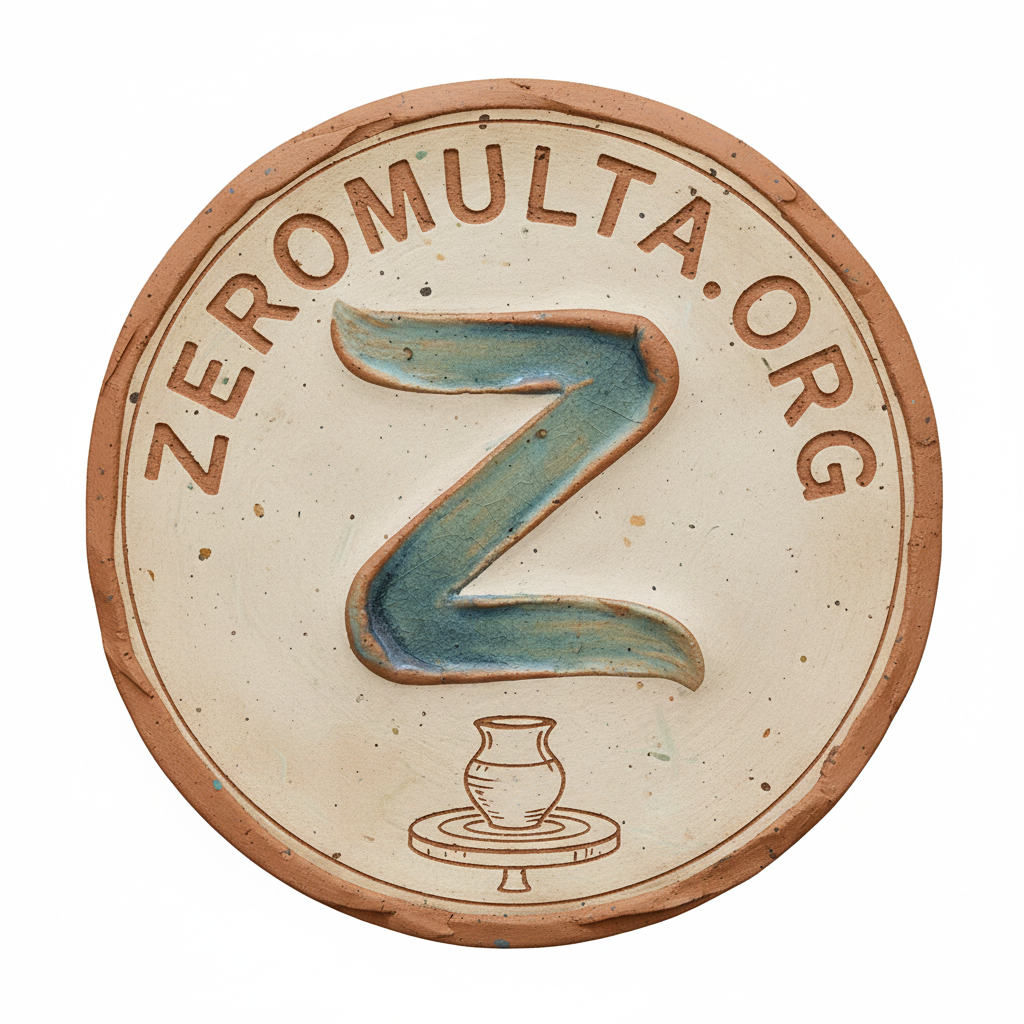Have you ever wondered why your pottery pieces sometimes shrink? It’s because clay shrinks during the firing process. Knowing this is key to getting the right size and shape. Premade clay can shrink by 10-20%, which is a big change.
To avoid surprises, you need to calculate the size you should throw the clay to. Use the formula: Desired Fired Size / [100% – Shrinkage %] = Required Thrown Size. For example, if you want a 10cm piece with 10% shrinkage, you’ll need to throw it to 11.1cm. This is shown on calculating clay shrinkage. I’ll dive into the details of clay shrinkage to improve your skills.
Key Takeaways
- Understand the typical shrinkage percentage range for premade clay.
- Learn the formula for calculating the required thrown size.
- Apply the formula to your projects for accurate sizing.
- Consider the impact of shrinkage on your final product’s design.
- Experiment with different clays to find the one that works best for you.
What is Clay Shrinkage Rate?
Clay shrinkage rate is how much clay shrinks when it dries and fires. It’s key in ceramics and pottery. It affects the size and look of a piece.
Knowing about clay shrinkage is important. It affects both the design and strength of a piece. When clay dries and fires, it loses water and shrinks. How much it shrinks depends on several things.
Definition and Importance
The clay shrinkage rate is how much a piece changes in size from wet to fired. It’s vital for potters and ceramic artists. It helps them plan their designs better.
It also keeps a piece from cracking or warping. Knowing the shrinkage rate helps artists avoid these problems. They can make their pieces stronger and more stable.
Factors Influencing Shrinkage
Many things affect clay shrinkage, like the clay type, moisture, and firing temperature. Different clays shrink at different rates. For example, earthenware shrinks more than stoneware or porcelain.
- Moisture in the clay affects its shrinkage. Drier clays shrink less.
- Firing temperature is also important. Higher temperatures mean more shrinkage.
- What’s in the clay, like additives, can change the shrinkage rate too.
Understanding these factors helps potters and ceramic artists control their work. They can make sure their pieces are the right size and quality.
How to Measure Clay Shrinkage Rate
To get the right size in ceramics, knowing how much clay shrinks is key. This means using the right tools and methods to measure and understand the results.
Tools and Methodologies
Getting precise with clay shrinkage needs the right tools and a good grasp of methods. A caliper is often used to measure the clay before and after firing.
Steps to Measure Clay Shrinkage:
- First, use calipers to measure the clay’s initial size.
- Let the clay dry completely, then measure again.
- Fire the clay as instructed by its type.
- After firing, measure the clay’s final size.
To find the shrinkage rate, use this formula: Shrinkage Rate = ((Initial Dimension – Final Dimension) / Initial Dimension) * 100.
Interpreting Measurement Results
After measuring clay shrinkage, it’s important to understand what the numbers mean. The shrinkage rate can change how your piece looks and feels.
| Shrinkage Rate (%) | Impact on Ceramics |
|---|---|
| 0-5% | Little effect; good for big pieces. |
| 5-10% | Some shrinkage; design might need tweaks. |
| 10%+ | Big shrinkage; design needs big changes. |
Ceramic experts say knowing and adjusting for shrinkage is vital. “Getting shrinkage right is essential for ceramics success,” a top ceramist points out.
“The art of ceramics is not just about shaping clay, but also about understanding its behavior.”
By learning to measure and understand clay shrinkage, ceramic artists can improve their work. They can make pieces that match their vision.
Types of Clay and Their Shrinkage Behaviors
Different clays shrink at different rates, which is key for making ceramics. Knowing these rates helps potters and artists get better results.
The type of clay and how it’s fired affect its shrinkage. For example, clays with more kaolin shrink less, while those with montmorillonite shrink more. This is important for ceramic shrinkage and the piece’s size and strength.
Earthenware vs. Stoneware
Earthenware and stoneware are two main clays used in ceramics. Earthenware shrinks more because it’s coarser and more porous.
Stoneware, being stronger and more dense, shrinks less. Choosing the right clay is key for understanding ceramic shrinkage.
| Clay Type | Shrinkage Rate | Firing Temperature |
|---|---|---|
| Earthenware | 10-15% | 1800°F – 2000°F |
| Stoneware | 8-12% | 2100°F – 2400°F |
Specialty Clays
Specialty clays like porcelain and raku add unique qualities to ceramics. Porcelain, known for its clarity and whiteness, shrinks more due to its fine particles and high firing.
Raku clay, used for raku firing, has a special composition. It allows for the unique cracking and metallic effects. Its shrinkage is less predictable and needs careful handling.
In conclusion, the clay type greatly affects a ceramic’s shrinkage. By knowing the traits of different clays, artists can better manage ceramic shrinkage. This leads to more successful and consistent results.
Effects of Shrinkage on Pottery and Ceramics
Shrinkage is very important in pottery and ceramics. It affects the design and how strong the final piece is. When clay dries and is fired, it changes a lot. These changes can make the work look different and less durable.

Impact on Design and Structure
The drying and firing of clay can cause shrinkage. This shrinkage changes the size and shape of the pottery or ceramic. If not planned for, it can lead to unintended design changes.
- Changes in size can affect how well the piece fits and works.
- Shrinkage can cause cracks or warping if not managed right.
- The strength of the piece can be weakened if shrinkage is ignored.
Techniques to Mitigate Shrinkage
To lessen the bad effects of shrinkage, potters and ceramic artists use special techniques. Knowing the clay’s properties and adjusting the clay firing process can help. This way, they can avoid shrinkage problems.
- Plan the design with shrinkage in mind.
- Choose clays with known shrinkage rates for better results.
- Change the firing schedule to control shrinkage and prevent cracking.
By understanding and working with clay drying and firing, artists can make beautiful and lasting pieces. Managing shrinkage well is essential for top-quality pottery and ceramics.
Testing for Shrinkage in Clay
Testing for clay shrinkage is key for potters and ceramic artists. It helps them predict and manage their materials. Knowing how to test for shrinkage lets them make better choices about their clay and firing.
Standard Testing Procedures
Standard tests for clay shrinkage measure the clay’s size before and after firing. A shrinkage gauge or caliper is used for this. It’s important to take many measurements and average them for accuracy.
Key steps in standard testing procedures include:
- Preparing a sample of the clay body
- Measuring the sample’s dimensions before firing
- Firing the sample according to the intended firing schedule
- Measuring the sample’s dimensions after firing
- Calculating the percentage of shrinkage
DIY Shrinkage Testing
For those who like a hands-on approach, DIY shrinkage testing is an option. It involves making a clay slab, marking a length, and measuring the change after firing.
The benefits of DIY shrinkage testing include:
- Cost-effectiveness, as it doesn’t require specialized equipment
- Flexibility, allowing for testing under various conditions
- The ability to test small or irregularly shaped samples
Both standard and DIY testing methods help potters and ceramic artists understand their clay’s shrinkage. This knowledge lets them control clay shrinkage better and reach their goals.
Common Misconceptions About Clay Shrinkage
Clay shrinkage can be a big problem if not understood right. Many potters and ceramic artists have wrong ideas about Clay Shrinkage Rate. These wrong ideas can cause expensive mistakes and unhappy results.
To clear up these wrong ideas, let’s look at some common myths and facts about clay shrinkage.
Myths vs. Facts
One wrong idea is that all clay shrinks the same. But, the truth is different types of clay shrink at different rates. For example:
- Earthenware clay shrinks more than stoneware or porcelain.
- Adding things like grog or sand can change the shrinkage rate.
- Firing methods and temperatures also affect the final shrinkage rate.
Another wrong idea is that clay shrinkage is always the same. But, the shrinkage process is complex. It’s influenced by many things, like:
- The clay’s moisture level.
- The firing schedule and temperature.
- Presence of impurities or additives.
Real-Life Implications
Knowing the truth about clay shrinkage is very important for potters and ceramic artists. By understanding what affects shrinkage, artists can:
Adjust their techniques to avoid problems like cracking or warping.
Choose the right clay for their projects. This means picking clay that fits the size, shape, and durability they want.

By clearing up wrong ideas about clay shrinkage, artists can improve their skills. They can make more consistent pieces and create beautiful, useful items.
Clay Shrinkage Rate in Construction
Understanding clay shrinkage is key for construction projects. It affects the building’s structural soundness.
The clay shrinkage rate is important for the quality and durability of clay-based materials. Construction projects use materials like bricks, tiles, and mortar. Knowing how clay shrinkage impacts these materials is critical.
Importance in Building Materials
Clay shrinkage greatly affects building materials. For example, clay bricks and tiles can shrink during drying and firing. This can cause cracks and structural problems if not managed.
To solve these issues, builders and manufacturers adjust the clay mix and control firing. You can use a clay shrinkage calculator to estimate material shrinkage.
Case Studies
Many case studies show the need to understand clay shrinkage in construction. For instance, a residential building project used clay bricks. By accounting for shrinkage in design, structural problems were greatly reduced.
Another study on a clay tile roof showed that knowing the shrinkage rate helped create a more durable roof. This roof needed less maintenance.
Tips for Working with Shrinkage-Prone Clay
It’s key for potters to know how shrinkage-prone clay acts. Shrinkage can change a piece’s size, shape, and strength. This is important for the final look and feel of your work.
Working with clay that shrinks a lot means you need to plan ahead. Here are some tips to help:
Best Practices for Potters
- Monitor Moisture Levels: Keeping the clay just right in moisture can reduce shrinkage. Make sure your workspace stays humid.
- Control Firing Processes: The firing process greatly affects clay shrinkage. Knowing the firing curve and controlling the kiln’s temperature can help avoid unwanted shrinkage.
- Use Appropriate Techniques: Techniques like coiling or slab construction can work with shrinking clay. Try different methods to find what suits your clay best.
How to Choose the Right Clay
Picking the right clay is vital for projects where shrinkage is a concern. Different clays shrink at different rates. Choose one that fits your project’s needs.
Think about these when picking clay:
- Clay Composition: Know the clay’s makeup, like its plasticity and dry strength. These affect how much it shrinks.
- Intended Use: Consider what your piece will be used for. For items you’ll use, choose clay that’s strong and safe.
- Shrinkage Rate: Look up the clay’s shrinkage rate. Some clays are made to shrink less, which is good for certain projects.
By following these tips and picking the right clay, you can reduce pottery shrinkage and ceramic shrinkage. This ensures your pieces look great and last long.
Conclusion: The Future of Clay Shrinkage Research
Looking back at clay shrinkage, it’s clear that research will be key in the future of ceramics and building. New trends and technologies are set to change how we work with clay.
Advancements in Materials Science
New ways to measure clay shrinkage are being created. These methods will help us predict and solve shrinkage problems more accurately.
Industry Applications
Clay shrinkage matters a lot in many fields, like pottery and building. Keeping up with new ways to measure clay shrinkage helps professionals make better products.
As research keeps growing, we’ll see more uses and improvements. This will show how vital it is to understand clay shrinkage.
